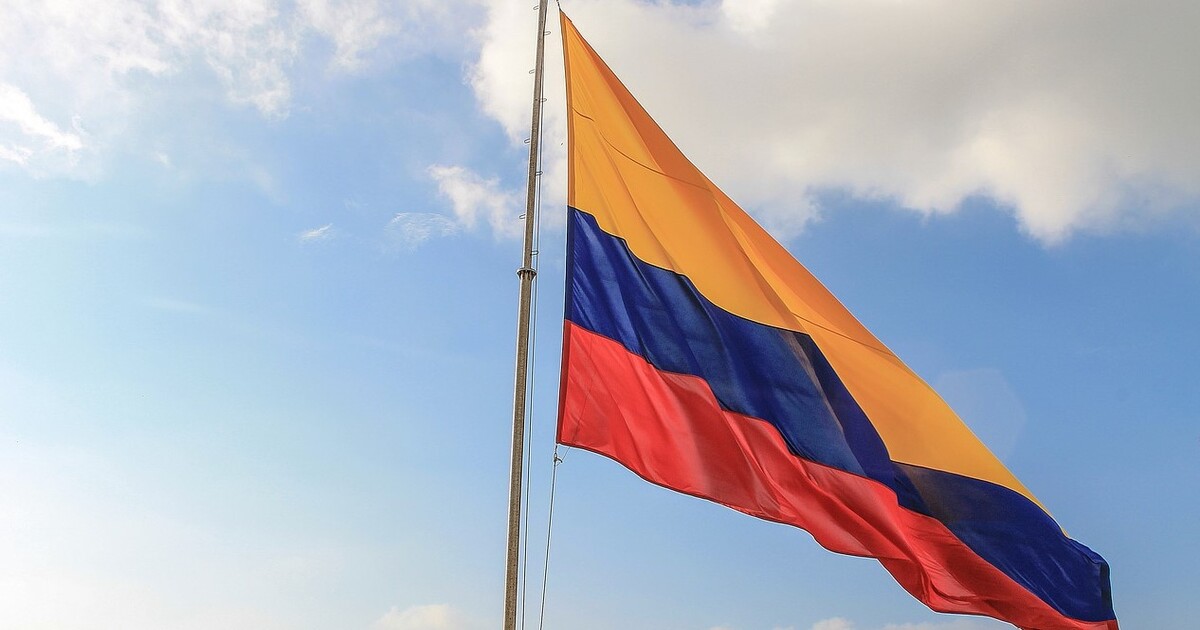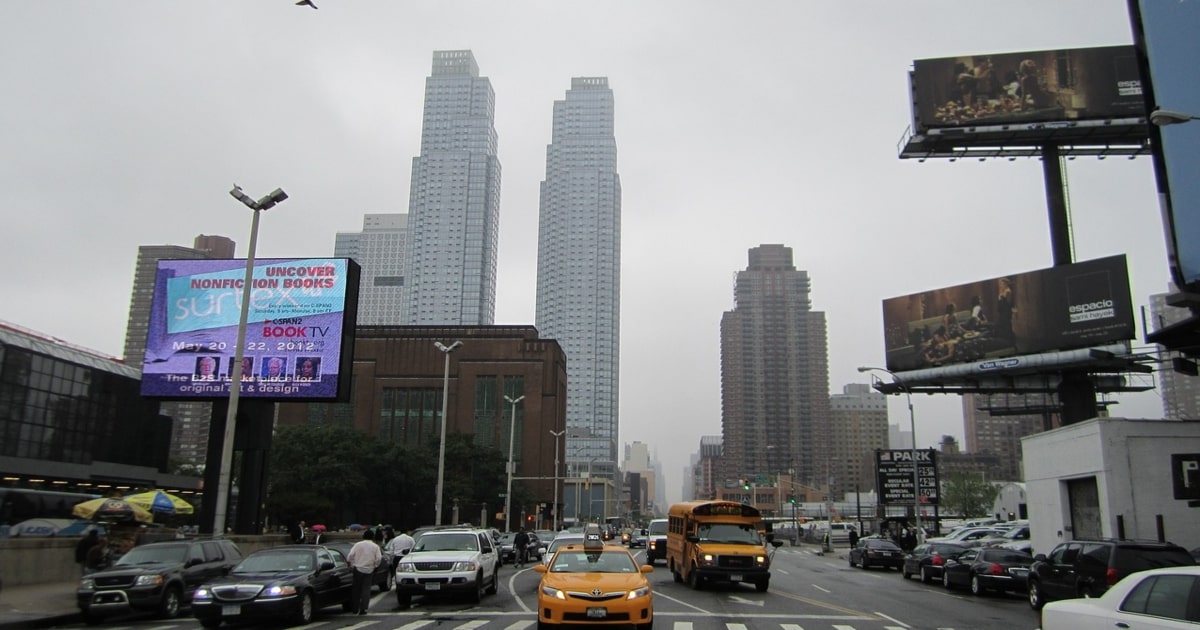The Colombian Love Affair With Uniforms
The disillusionment in Colombia with the state’s security sector which fails to adequately protect its citizens creates a national tendency to believe in the safety of uniforms.
December 28, 2023

You’re late. The traffic down La Septima was particularly awful that morning, so you decided to get out and sprint for it. You have five minutes to rush to your meeting.
Crashing through the lobby doors, you think only about dashing to the lifts, punching the bottom, taking a breath and mentally readying yourself. But, this is Bogotá, and barring your access is a security maze that would make Heathrow airport look like a walk in the park.
The cluster of gatekeepers usually consist of a security guard and/or concierge who often double-up as receptionists. First, you present yourself at the desk, explaining to the confused vigilante de seguridad how your foreign ID doesn’t follow the same format as the Colombian cedula.
The front desk then asks for the name of who you are meeting and calls the office to verify the information. Finally, green light given, you pass your phone and bag through a security scanner, receive a temporary day pass and proceed through the barrier and on to the lift. The whole procedure takes anywhere from five to ten precious, maddening minutes.
The mirage of authority
While this is particularly common in the business district where I would often have meetings, Bogotá is replete with apartment buildings where a vigilante on night duty will duly ask you to sign in to enter the building.
I often thought the job was a lonely one – long shifts of tedium where slim consolation was found in the mirage of authority that the badge and uniform provided.
The number of men, and they are almost exclusively men, who work as vigilantes or muchachos de seguridad is enormous. There are around 390,000 private security personnel across Colombia.
In Bogotá the figure is 90,000, compared with 18,000 police. They make up a sizeable chunk of Bogotá’s labor force, an invisible but unmissable sentinel, intended to guard and to protect – but failing to engender a greater sense of serenity.
The Colombian obsession with uniforms and the sheer quantity of vigilantes privados is a curious one. It can be seen as a by-product of the decades upon decades of violence.
What is the state?
The sociologist Max Weber articulated arguably the neatest definition of what the state is. Packed into one phrase: The State is that which claims a monopoly of legitimate forms of violence. The State therefore relies upon having a capable and accountable military and police force to enforce its laws and protect its citizens.
The civil war in Colombia can be seen as a contestation of this idea of the State. Guerrillas on the left, paramilitaries on the right and narco-traffickers in between all contested the legitimacy of the State’s authority and that monopoly over legitimate forms of violence.
Los muchachos de seguridad of today can be situated as part of the legacy of the civil conflict. Even after de-escalation through the peace process, there remains a residual energy. Men who spent their careers in uniforms for one side or another could find a similar but quieter job, this time in a different uniform.
The extent of private security also indicates a distrust and skepticism that the state fails to adequately protect its citizens that continues into the present.
These men are privately employed by businesses, apartment buildings and shopping centers around Bogotá. And while precise figures of private sector expenditure in los vigilantes privados is spotty, there is plenty of evidence in the public investment into security. The misdirection of public investments into uniforms is staggering and covered in brilliant detail in Adam Isacson’s article here.
Isacson’s starting point was the bizarre contrast between the high levels of violence that persist in Colombia, and the significant spending that goes into one of the continent’s largest security forces.
Colombia’s 2023 budget spent about 48 trillion pesos for its Defense Ministry – which is nearly 4% of the country’s GDP. Excluding the United States, Colombia has the largest army in the Americas.
Spending doesn’t ensure security
Yet, such investment has had negligible impact on crime figures. Homicide rates taken from 2021 place Colombia as the Americas’ sixth highest – ahead of Brazil, El Salvador and Guatemala, and far higher than Peru or Chile.
Between 2017 and 2021, homicides increased by 15%, massacre victims more than doubled and victims of mass internal displacements increased by over 300%.
Colombia remains the most dangerous country in the world to be a human rights or environmental defender. If some thought the issue would improve under the left-wing Petro, the first six weeks of his presidency in August 2022 saw 18 massacres and the killing of eight police officers in San Luis, Huila.
The key to understanding the mismatch between robust security expenditure and rampant insecurity is the mistake made in conflating the security services with the security sector.
The security sector “onion”
It is an error to confuse uniforms with the rest of the security sector. Isacson paints the security sector as a large onion, full of concentric layers. Closest to the center are the security services – that part of the monopoly of legitimized violence which Weber described.
The next layer consists of bureaucratic administrators, civilians in charge of the day-to-day management of defense and public security ministries. These people plan, analyze and budget. They also understand the rules of evidence, oversee police procedure and take into account human rights.
These are the civil servants who include independent agents who handle internal affairs and bridge the security sector with the judiciary when personnel violate laws, abuse human rights or engage in corruption.
For over three decades, Colombia has consistently appointed civilian defense ministers and mayors to jointly oversee the police, albeit with occasional confusion.
It would be challenging, however, to assert that Colombia has effectively developed robust capabilities and expertise within the civilian sector to handle defense matters. Too often, these responsibilities rest in the hands of uniformed men.
The judiciary
The next layer is the judiciary. Prosecutors, judges, investigators and the prison system are intended to hold security forces accountable whenever the issue becomes criminal.
It is evident that Colombia has never invested sufficiently in this layer. One indicator is the length of time the judicial process takes in Colombia. Another clue is the high percentage of serious crimes that go unsolved or even undenounced.
Colombia has an enormous pre-trial population detained in prisons with nearly a quarter of all inmates in prison on remand.
The next layer are institutions that curry out monitoring and oversight such as comptrollers, auditors, procurators and ombudsmen. Among these, expenses are evaluated, waste and fraud detected and the weight of policies’ impact on rights and security assessed.
Congress, La Contraloria, La Producaduria and La Defensoria could be carrying out a much more assertive oversight of security institutions than they currently do.
Civil society and NGOs
The final, outer layer is made up of those who contribute to independent oversight from outside the state. Civil society organizations, NGOs and human rights organizations focus on defense and security issues.
Colombia can point proudly to its robust, effective communities of journalists, albeit a threatened one. But there are few non-governmental think tanks or similar organizations that specialize in security policy.
These are the somewhat boring but essential cogs that are important for a flourishing democratic system. Interlinked, though independent from one another, it is the weakness, underdevelopment or outright absence of so many of these elements that helps explain the insecurity and the sensation of it in Colombia.
Isacson argues that there is not enough interaction between the inner and outer most layers. Without connective tissue bridging each layer, the overall structure of the security sector diminishes.
Conclusion
Colombia invests more than virtually all its Latin neighbors in security and defense, its brigades are muscular and its weapons modern. But it leaves the rest of the security sector starved. The judiciary is underequipped, oversight is weak, independent expertise is thin and corruption can – and does – run rampant.
Zoomed in, the emblem of this dilemma is observable every day in the uniformed men swaggering about Bogotá. The disillusionment in the state in having a security sector that fails to adequately protect its citizens filters through different layers of state and society, arriving at a national tendency to believe in the safety of uniforms.
Perhaps Colombia is stuck. For all the uniforms and badges in the land, the country will not feel safer until the gap between the security services and the wider sector is at least shortened.
The process would entail a degree of structural, as well as individual, introspection by men who long ago were seduced by the power of the badge and uniform.
That is unlikely to happen overnight. For now, los vigilantes privados are likely to keep up the tedium of their long shifts, safe in the security of their job and the small delusion of authority that goes with it.
Takeaways
Dateline Colombia: What could possibly explain the national tendency to believe in the safety of uniforms?
The civil war in Colombia can be seen as a deeply rooted dispute over the idea of the state itself.
Guerrillas on the left, paramilitaries on the right and narco-traffickers in between all contest the Colombian state's monopoly over legitimate forms of violence.
Colombia remains the most dangerous country in the world to be a human rights or environmental defender.
Perhaps Colombia is stuck. For all the uniforms and badges in the land, the country will not feel safer until the gap between the security services and the wider sector is at least shortened.
The key to understanding the mismatch between robust security expenditure and rampant insecurity in Colombia is the mistake made in conflating the security services and the security sector.
The number of men who work as vigilantes or muchachos de seguridad in Colombia is enormous. There are around 390,000 private security personnel across the country.
Colombia invests more than virtually all its Latin neighbors in security and defense, its brigades are muscular and its weapons modern. But it leaves the rest of the security sector starved.
Read previous

Global Culture
Beauty Never Dies
December 24, 2023
